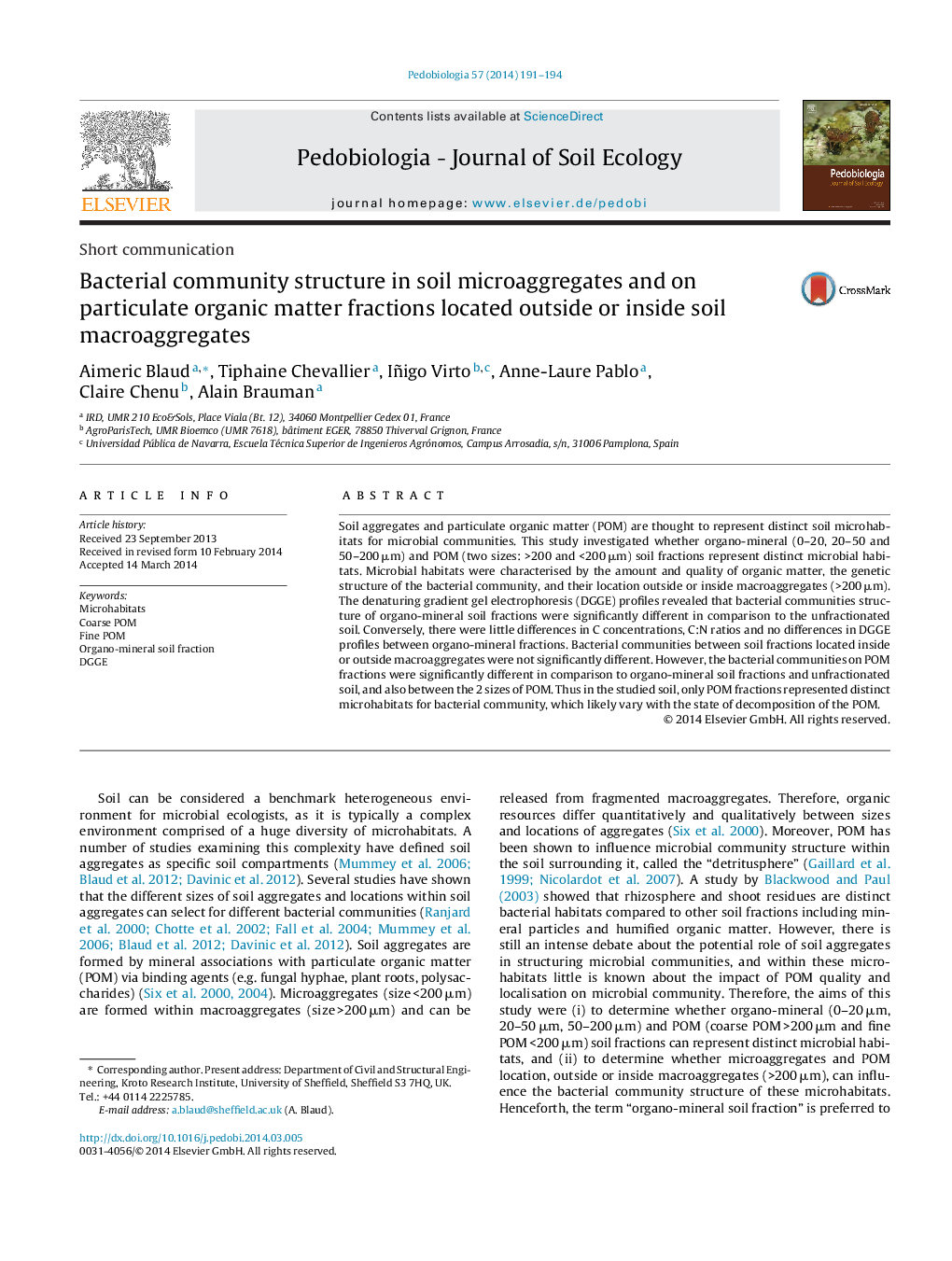| Article ID | Journal | Published Year | Pages | File Type |
|---|---|---|---|---|
| 2061064 | Pedobiologia | 2014 | 4 Pages |
Soil aggregates and particulate organic matter (POM) are thought to represent distinct soil microhabitats for microbial communities. This study investigated whether organo-mineral (0–20, 20–50 and 50–200 μm) and POM (two sizes: >200 and <200 μm) soil fractions represent distinct microbial habitats. Microbial habitats were characterised by the amount and quality of organic matter, the genetic structure of the bacterial community, and their location outside or inside macroaggregates (>200 μm). The denaturing gradient gel electrophoresis (DGGE) profiles revealed that bacterial communities structure of organo-mineral soil fractions were significantly different in comparison to the unfractionated soil. Conversely, there were little differences in C concentrations, C:N ratios and no differences in DGGE profiles between organo-mineral fractions. Bacterial communities between soil fractions located inside or outside macroaggregates were not significantly different. However, the bacterial communities on POM fractions were significantly different in comparison to organo-mineral soil fractions and unfractionated soil, and also between the 2 sizes of POM. Thus in the studied soil, only POM fractions represented distinct microhabitats for bacterial community, which likely vary with the state of decomposition of the POM.
